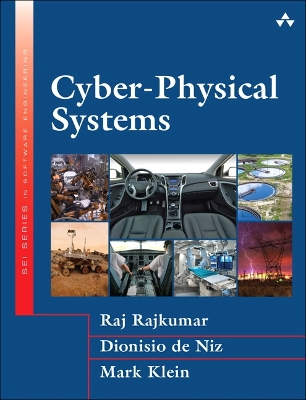SEI Series in Software Engineering
2 total works
The next generation of mission-critical and embedded systems will be "cyber physical": They will demand the precisely synchronized and seamless integration of complex sets of computational algorithms and physical components. Cyber-Physical Systems is the definitive guide to building cyber-physical systems (CPS) for a wide spectrum of engineering and computing applications.
Three pioneering experts have brought together the field's most significant work in one volume that will be indispensable for all practitioners, researchers, and advanced students. This guide addresses CPS from multiple perspectives, drawing on extensive contributions from leading researchers.
The authors and contributors review key CPS challenges and innovations in multiple application domains. Next, they describe the technical foundations underlying modern CPS solutions-both what we know and what we still need to learn. Throughout, the authors offer guiding principles for every facet of CPS development, from design and analysis to planning future innovations.
Comprehensive coverage includes
Understanding CPS drivers, challenges, foundations, and emerging directions
Building life-critical, context-aware, networked systems of medical devices
Creating energy grid systems that reduce costs and fully integrate renewable energy sources
Modeling complex interactions across cyber and physical domains
Synthesizing algorithms to enforce CPS control
Addressing space, time, energy, and reliability issues in CPS sensor networks
Applying advanced approaches to real-time scheduling
Securing CPS: preventing "man-in-the-middle" and other attacks
Ensuring logical correctness and simplifying verification
Enforcing synchronized communication between distributed agents
Using model-integration languages to define formal semantics for CPS models
Register your product at informit.com/register for convenient access to downloads, updates, and corrections as they become available.
Evaluating Software Architectures
by Paul Clements, Rick Kazman, and Mark Klein
The foundation of any software system is its architecture. Using this book, you can evaluate every aspect of architecture in advance, at remarkably low cost -- identifying improvements that can dramatically improve any system's performance, security, reliability, and maintainability. As the practice of software architecture has matured, it has become possible to identify causal connections between architectural design decisions and the qualities and properties that result downstream in the systems that follow from them. This book shows how, offering step-by-step guidance, as well as detailed practical examples -- complete with sample artifacts reflective of those that evaluators will encounter. The techniques presented here are applicable not only to software architectures, but also to system architectures encompassing computing hardware, networking equipment, and other elements. For all software architects, software engineers, developers, IT managers, and others responsible for creating, evaluating, or implementing software architectures.

